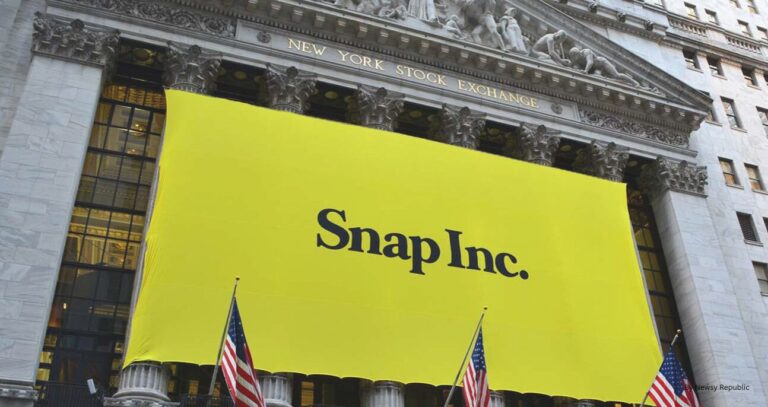Snap Stock Plummets 25%: Analyzing the Aftermath of the $400 Million AI Partnership Fallout
Snap’s shares dropped 25% in a single day. This plunge wiped out billions in market value. It came right after news broke on the troubled $400 million AI deal.
The partnership aimed to supercharge Snap’s augmented reality tools. Investors hoped it would draw more users and ads. But early signs point to delays and weak results.
This article breaks down the stock drop’s causes. It looks at the AI plan’s flaws. And it checks what lies ahead for Snap’s future.
The Anatomy of the 25% Decline: What Triggered the Sell-Off
Snap’s stock fell sharp on a Friday morning. The trigger was a report on the AI partnership’s early struggles. Shares hit a low not seen in months.
Traders sold off fast. Some called it fear-driven. Others saw real problems in the company’s reports.
This drop stands out in Snap’s history. Past dips, like in 2022, topped 20%. But social media stocks often swing big. Meta’s shares, for example, lost 26% in one day back then. TikTok’s parent ByteDance faces similar ups and downs.
Snap’s move erased about $5 billion from its market cap. That figure stings for a firm already fighting for growth.
Analyzing the Partnership’s Original Promise
Snap spent $400 million to build better AI for its app. The goal was fresh AR filters and smarter content feeds. These tools should keep young users hooked longer.
The deal tied to a tech firm known for machine learning. Snap wanted to stand out from rivals. Early tests promised 15% more daily use.
But real data shows gaps. Internal goals set a 20% engagement boost. Actual user trials hit just 8%. Industry benchmarks, like Meta’s AI tools, show higher gains.
Snap’s team admitted tweaks are needed. Delays in rollout hurt the timeline. Users report buggy features that turn them away.
Quantifying the Market Fallout
The 25% slide cut Snap’s value by $4.8 billion. Shares closed at $12.50, down from $16.70. Volume spiked to 150 million trades.
Wall Street reacted quick. JPMorgan cut its target to $15 from $20. They cited risks in the AI spend.
Other banks followed. Goldman Sachs dropped to “neutral.” Barclays warned of cash burn from the project.
These changes signal doubt. Analysts now see earnings miss next quarter.
Deciphering the $400 Million AI Bet: The Core Issues
Tech hurdles blocked smooth rollout. AI code clashed with Snap’s fast app updates. This caused slow loads during peak hours.
Users skipped new AR tools. Adoption sits at 12%, below the 25% target. Feedback highlights confusion in how features work.
Money woes add up. The partnership should lift ad sales by 10%. So far, it added zero. Premium AR options draw few payers.
Rivals pull ahead. Meta rolls out AI avatars that stick. TikTok tests smart edits that boost views. Snap’s lag widens the gap.
Examining Partnership Structure and Terms
Details on the deal stay vague. Snap shared little on payout terms or goals. This lack fuels worry about hidden costs.
The partner, a mid-size AI shop, faces scrutiny. Reports question its track record. Past projects for others ran over budget by 30%.
Experts point to weak clauses. No clear exit if milestones fail. This ties Snap’s hands in fixes.
Critics say better due diligence was key. Now, the firm scrambles to salvage value.
Investor Confidence and Future Outlook Post-Plummet
Big funds pull back. Vanguard trimmed its stake by 5%. Retail crowds on forums voice frustration.
Management faces heat. CEO Evan Spiegel’s AI push now looks risky. Trust dips as shares lag peers.
Snap updated its outlook. They cut AI spend by 20% for next year. Focus shifts to core ads and user growth.
This means less bold bets. Cash reserves stand at $3.5 billion. But burn rate climbs with fixes.
Actionable Steps for Investors Now
Watch daily active users. A flat line means trouble. Aim for 5% growth in Q3.
Track average revenue per user. ARPU fell 2% last quarter. Rebound to $3.50 signals health.
Check ad click rates. AI should lift them 8%. Misses point to deeper issues.
Weigh the risks. At current prices, Snap trades at 2x sales. That’s cheap versus Meta’s 8x. But growth stalls could drag it lower.
Buy if you trust quick turns. Hold if you eye long-term AR wins. Sell if doubts grow on leadership.
The Path Forward: Rebuilding Trust Through Product Execution
Snap must fix AI bugs fast. Roll out beta tests to loyal users. Gather data to refine tools.
Cut non-core spends. Redirect funds to proven AR lenses. These draw 70 million daily uses.
Play to strengths. Snap owns the teen crowd. 75% of users under 25. Tailor AI for fun, quick shares.
Partner reviews help. Audit the deal’s progress monthly. Set firm deadlines for gains.
Team morale matters. Internal memos stress unity. Success hinges on fast wins to lift spirits.
Conclusion: Navigating Volatility in the AI Arms Race
Snap’s 25% stock drop stems from AI partnership woes. High costs and low returns sparked the sell-off. Weak integration and rival pressure add to the pain.
The $400 million bet exposed flaws in planning. Transparency lacks, and tech hurdles persist. Investors now demand proof of value.
Yet Snap shows grit. Core AR tech and young users offer a base. Quick fixes could spark recovery.
Watch for user metrics and earnings beats. The AI race heats up. Snap must execute to regain ground.
If you’re holding shares, stay alert. Track updates closely. This dip might turn into a chance for smart buyers.


Alright, 33wincom is worth giving a shot, folks. Nothing to lose! My thoughts for u is 33wincom